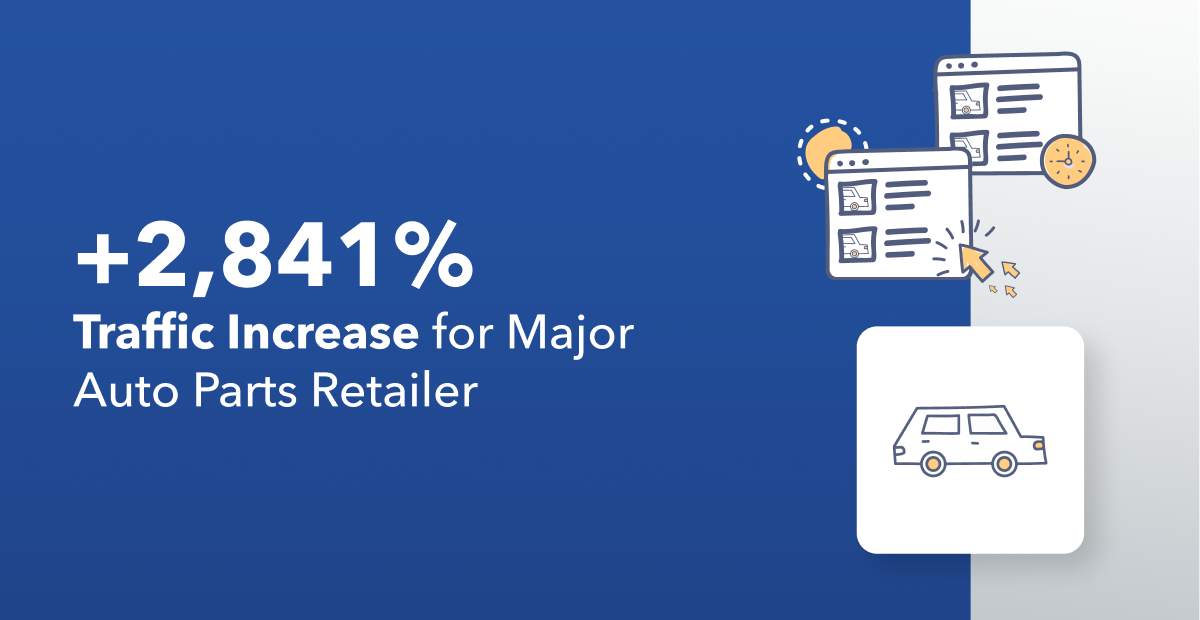In the evolving world of digital marketing, A/B testing is a powerful strategy that can significantly enhance your website's visibility and performance.
However, understanding how to effectively implement these tests while avoiding common pitfalls that can negatively impact SEO is crucial for success.
This guide will provide you with a comprehensive overview of how to leverage A/B testing for SEO without compromising your search engine rankings.
Key Takeaways
1. A/B testing boosts performance when variations stay index-friendly through canonical tags, transparency, and short test cycles.
2. Align user-focused experiments with Google and AI crawlers by avoiding cloaking and preserving consistent signals.
3. Prioritize tests on titles, metadata, and internal links to influence rankings and visibility in AI answers.
Table of Contents:
What Is A/B Testing In SEO
Standard A/B testing involves creating and deploying multiple versions of the same landing page at the same time.
Different users are sent to different versions of the same page so the SEO or digital marketing team can measure key metrics such as conversion rates. If one version has a significantly better conversion rate, then a test winner can be declared.
The version of the page the user lands on is really up to chance, whether they use Google search or follow a URL directly.
Search Engine Crawlers can also be sent to an alternate version of the same page. It’s the content or presentation of the page that changes, not the URL.
This type of testing is not to be confused with SEO split testing, which involves grouping statistically similar pages and running a test on those groups (as opposed to on an individual page). These are unique pages with unique URLs.
Here’s a graphic to illustrate the difference between A/B testing and SEO split testing:
 (A/B testing creates multiple versions of the same landing page.)
(A/B testing creates multiple versions of the same landing page.)
Follow along with our blog on how to run a successful SEO test if this type of testing is your goal. If you're interested in A/B testing specifically, stick around!
Risks to Avoid During A/B Testing
A/B testing, when done correctly, doesn’t have to hurt your SEO.
However, if not implemented carefully, it could lead to issues like cloaking or duplicate content and can unintentionally send mixed or conflicting signals to search engines and AI crawlers.
Ultimately, search engines rely on consistency and transparency when crawling and indexing content. Significant differences between A/B test variations, if improperly handled, can raise red flags. Here’s why:
-
Cloaking: Cloaking occurs when the content served to search engines differs from what users see. Search engines may interpret this as an attempt to manipulate rankings, which can result in penalties.
-
Duplicate Content: If multiple variations of a page exist without proper canonicalization, search engines might struggle to determine the preferred version. This confusion could dilute your rankings by splitting link equity or causing duplicate content issues.
-
Prolonged Tests: Running A/B tests for too long without definitive results may signal inconsistency to search engines, affecting their understanding of your site’s intent.
Fortunately, there are ways to avoid these issues.
A/B Testing SEO Best Practices
To ensure your A/B tests enhance your site’s performance without compromising your search rankings, it's important to be mindful of a few guidelines and considerations, per Google:
- No cloaking
- Use rel=“canonical”
- Use 302 redirects
- Be mindful of the test’s length
Let's dive into these in more detail.
#1. Ensure A/B Test Variants Don’t Trigger Cloaking Signals
Cloaking happens when test platforms accidentally serve different page versions to users and crawlers without proper controls.
We know that with user A/B testing, users are split and provided different versions of the same page.
Cookies ensure that those users land on the same version of the page on any subsequent visits.
As search bots access this page, they too are split — but cannot be cookied. As a result, they get multiple versions of the same page on subsequent visits. This creates the appearance of cloaking, where they detect the non-visible version hidden by the user testing mechanism.
Some testing vendors may tell you that this is not a problem due to the short duration of the test, but it is risky.
Guidance from major search engines supports ethical testing practices as long as users and crawlers receive consistent experiences.
#2. Use Canonical Tags to Consolidate SEO Signals
In the unfortunate event that a search bot finds two versions of the same page, use the rel="canonical" tag to indicate the preferred version of a page.
This prevents search engines from indexing multiple variations and consolidates ranking signals to a single URL.
#3. Use Temporary Redirects for Short-Term A/B Tests
Since no test should last forever — as we’ll see below — it’s important to show search engines that any redirect isn’t permanent.
This is where the 302 redirect comes in.
Indicating that the redirect is temporary works to prevent any loss in page rank for the original page.
#4. Keep A/B Tests Short to Maintain Stable Ranking Signals
Don’t let any test overstay it's welcome.
If search engines see the test content and the original content, it can cause confusion — resulting in lower rank. The longer a test runs, the bigger the issue this can become.
Shorter test cycles help maintain consistent ranking signals and reduce confusion for search engines and AI systems.
Most search engines recommend wrapping up tests as soon as statistically significant results are achieved, typically within a few weeks.
#5. Avoid Duplicate Content Across Test Variations
Some tests result in cloning content and changing it slightly for the test.
It’s usually hidden from the user, but search engines can see it in the code and may flag it as duplicate content.
SEO A/B Testing Examples
Now that you know how to run an A/B test without hurting your site's visibility, here are a few examples of tests to consider running:
- Testing Title Tags for Higher Click-Through Rates (CTR): Test variations of title tags to identify which drives more clicks and improves user engagement.
- Experimenting with Meta Descriptions: Compare meta description styles to find which one improves CTR and better aligns with user intent.
- Content-Length Optimization: Test short vs. long-form content to see which format improves rankings, engagement, and dwell time.
- Internal Linking Variations: Experiment with the number and placement of internal links to boost page authority and user navigation.
- Testing Structured Data Markup: Add schema markup to see if it enhances SERP visibility through rich snippets like ratings or pricing.
- Headline Optimization on Blog Posts: Test different headlines to determine which increases clicks and engagement metrics.
- Testing Image Alt Text and File Names: Optimize alt text and file names to see if they improve image search visibility and page relevance.
- Navigation and Menu Changes: Adjust navigation to test whether detailed categories improve user experience and long-tail keyword rankings.
- Call-to-Action (CTA) Testing for Engagement: Experiment with different CTAs to identify which generates more clicks and conversions.
- Mobile vs. Desktop Page Speed Tests: Optimize mobile speed to test its impact on rankings, user engagement, and Core Web Vitals.
Recommended Reading: SEO Split Testing Examples
Conclusion
A/B testing is an invaluable method to refine site performance while maintaining alignment with search engine guidelines.
By focusing on specific elements like titles, meta descriptions, content, and technical optimizations, you can discover what resonates best with your audience and search engines alike.
Just ensure to follow the best practices listed above to avoid unintended SEO pitfalls.
<<Editor's note: this post was originally published in October 2018 and has since been updated.>>









Comments
Currently, there are no comments. Be the first to post one!